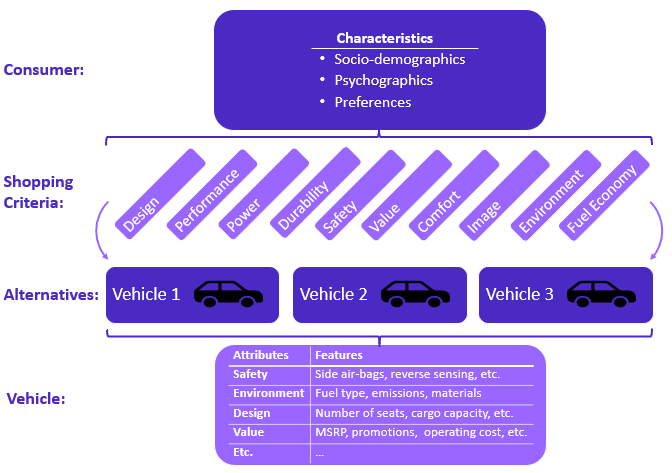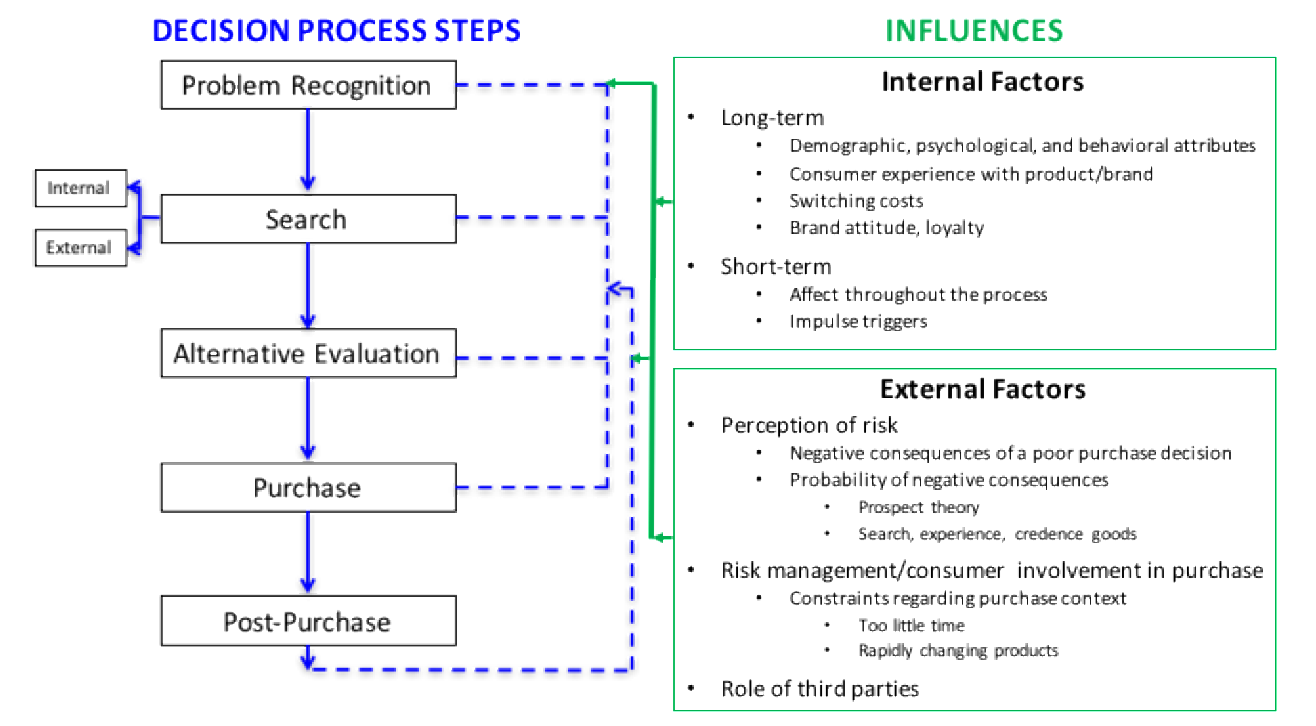The Green Light on Buying a Car: How consumer decision-making interacts with environmental attributes in the new vehicle purchase process
We Wonder…
How do consumers’ shopping criteria affect their decision-making during the new vehicle purchase process and what are the implications for the greening of the U.S. light-duty vehicle (LDV) fleets?
Research Question:
- How do different U.S. consumers weight new vehicle shopping criteria, especially the criteria of environmental performance and fuel economy?
- How do consumer criteria weightings manifest in their consideration sets and the newly purchased vehicles?
Research Task: Perform Analytical Hierarchy Process (AHP), using ten vehicle purchase criteria selected through Exploratory Factor Analysis based on Strategic Vision’s New Vehicle Experience Survey (2014-2016) and aligned with literature review. The results help us better understand the distribution of criteria rankings by U.S. consumers and their connection to purchase decision.
Task Overview: We first examine the purchased vehicle and considered vehicle(s) across body style and fuel type. Then, we identified ten vehicle attribute-related criteria (design, performance, power, durability, safety, value, comfort, image, environment, and fuel economy), and calculated relative importance weights of those ten criteria for each consumer. The distributions of relative weights were compared across demographics and various vehicle types. Finally, we examined the fuel economy and fuel type of purchased and considered vehicles across respondents with differing relative criteria weights.
Below we present a diagram of the alternative evaluation in vehicle purchase process:

Key Findings:
- Performance, durability, safety, and value are highly weighted criteria, but relative values vary considerably across specific body styles and fuel types.
- Consideration sets tend to be comprised of a single body style.
- Higher income groups place significantly lower relative value on the shopping criteria of environmental friendliness and fuel economy.
- Criteria rankings are similar across genders, but women place a higher relative value on environmental criteria than men.
- Higher relative shopping criteria weights for fuel economy and environmental friendliness are associated with vehicle attributes of higher miles per gallon (MPG) and increased likelihood of incorporating alternative fuels in both the consideration set and the final purchase.
Research Team: Margaret Taylor (LBNL lead), Dana Jackman (EPA lead), K. Sydny Fujita and Hung-Chia Yang
Funding Information: U.S. Environmental Protection Agency Office of Transportation and Air Quality
Consumer Behavior and the Plug-In Electric Vehicle Purchase Decision Process: A Research Synthesis
We Wonder…
What motivates the purchase of a plug-in electric vehicle (PEV), and what policies can support this market to maturity?
Research Question: What knowledge gaps exist in the current state of research on the consumer’s role in the market for PEVs?
Research Task: Apply the general tools and theories of consumer behavior research to the specific realm of PEVs.
Task Overview: We used a modified version of the EKB model of the consumer purchase decision process (as presented by Darley 2010) to structure a review of transportation-focused literature. This model depicts the decision making process as having five steps: (1) problem recognition; (2) search; (3) alternative evaluation; (4) purchase; and (5) post-purchase behavior; and allows for iterative feedbacks and the influence of internal and external factors. We conclude with a table of research questions suggested by our review, structured according to the steps of the decision process.
Research Team: Margaret Taylor (PI), Sydny Fujita; in consultation with Frances Sprei.
Funding Information: DOE Vehicle Technologies Office EV Everywhere Program
More:
Consumer Behavior and the Plug-In Electric Vehicle Purchase Decision Process: A Research Synthesis
This report synthesizes consumer behavior research as it pertains to the plug-in vehicle (PEV) purchase decision process, in order to clarify the state of knowledge vis-à-vis the role of consumers in the maturing U.S. PEV market. We draw heavily from the insights of marketing theory, in particular framing our review of PEV literature around the EKB model of purchase decisions. While we highlight many consumer obstacles to mass-market PEV adoption, we also identify a clear and increasing value proposition for PEV purchase for a growing group of consumers based on the economic, performance, convenience, psycho-social, and societal benefits of PEVs.
Below we present a diagram of the consumer purchase decision process:
